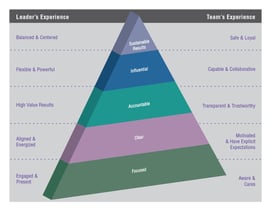As noted in previous blogs SmartTribes – How to Deliver Accountability and Consequences That Work - More SmartTribes we’re exploring Christine Comaford’s Smart Tribes  for ideas to help you grow your business. If you’ve not picked it up I highly recommend it.
for ideas to help you grow your business. If you’ve not picked it up I highly recommend it.
Today we’ll explore how trust is broken and the consequences when egos are sparked in our business relationships.
Comaford notes, “Accountability is so deeply tied to promises and trust that safety, belonging, and mattering are quickly damaged when accountability is dropped.”
As leaders, it’s key when administering consequences to determine if accountability is being dropped because the person is in their Critter State and is stuck, or if he/she is intentionally uncooperative.
Trust, Comaford suggests, is broken in three levels:
- Capability: Is the person truly capable of doing what was promised? Capability breaches of trust are the easiest to fix. We either help her get the skill she needs or move her to a new role.
- Commitment: Is she committed to following through on what was promised? Commitment breaches are trickier—when a person repeatedly drops commitments we must find out what the underlying cause is. Use an Outcome Frame to achieve this. Ask her, “What do you want? What will having that do for you? When will you know when you have it?” Once this is clear, we can help her shift to keeping commitments.
- Character: If a person keeps making promises and breaking them, who is she, really? She doesn’t seem to have a consistent character we can count on. Character breaches are the hardest, since we now doubt who the person really is. Was it all a front? Who’s behind the mask? Breaches of this type can take years of demonstrating consistency to win back trust.
Putting these three levels in front of you when you evaluate one of your non performers would make it much easier to determine your next steps wouldn’t it? It’s the concept that a problem well-defined is half-solved.
Levels 2 and 3 require more skill as a leader and a manager. For help on Commitment I suggest walking through the Outcome Frame to understand How to Coach an Underperformer Without Scaring Them to Death.
Character can be a slippery slope. Do you recall from Patrick Lencioni’s Five Dysfunctions of a Team the Fundamental Attribution Error? We as human beings tend to falsely attribute the negative behaviors of others to their character, while we attribute our own negative behaviors to our environment. In other words, we like to believe that we do bad things because of the situations we are in, but somehow we assume the others do bad things because they are predisposed to being bad. Be sure you are basing your judgement based on objective versus subjective behavior.
The next step is a situation that I admit I’ve fallen into many times when attempting to help change the performance of team member. I’ve included references to the three Maslow’s Hierarchy of Needs (safety, belonging and mattering) Comaford offers are essential to getting people into their Smart State where your business really generates growth.
How is the ego triggered and how do we unintentionally send someone into their Critter State? This happens when we question someone’s Competence (sounds like safety, yes?): If you openly question someone’s ability, you are poking at the ego’s cage, so don’t be surprised to hear a roar. Better to discover their level of competence and help them increase it. Significance (sounds like mattering, doesn’t it?): If you talk down to a person and see them as beneath you, be ready for the ego to attack—which could be in a passive-aggressive sabotaging manner. Lovability (this triggers safety, belonging, and mattering issues): Leaders often suggest lovability isn’t questioned in business scenarios. Not so! There are always team members who are perceived as “above the law” or in the “in crowd”—that is, more lovable. Those on the outside can damage your culture through dissent. Better to love all.
On the flip side, as we reinforce and celebrate someone’s competence, appreciate their contributions and significance, and foster a culture of equality and transparency (thus lovability), we help our team stay in their Smart State. Ahhh to be in this position most of the time!
Comaford insists, “Success with accountability requires that we help provide structures and containers so our team can stay in their Smart State. Trust and ego flare-ups put us in our Critter State.”
 What consequences do you set for yourself and your team when accountability is dropped? Consequences remind us that not keeping our commitments will carry repercussions.
What consequences do you set for yourself and your team when accountability is dropped? Consequences remind us that not keeping our commitments will carry repercussions.
Comaford suggests you answer the following questions to assess your company’s level of accountability.
- Do you Utilize the accountability equation? [Assigner’s (Leader’s) Clear Expectations + Owner’s (Team member’s) Agreement + Personal Rewards/Consequences (for Team Member) = High Accountability and Ownership]
- Create clear accountability structures? (Check out Positioning Systems Accountability Tool)
- Track results with weekly reporting? (Check out Run an Effective Weekly Meeting)
- Have rewards for high performance and consequences for low performance? (Check our last blog Consequences That Work - More SmartTribes)
Just as our customers do, Comaford’s clients find that when they apply the four practices above, they see tremendous ROI within as little as six months. You will need talent (that’s what Comaford calls human resources) to help you implement and manage the above. Here are Comaford’s statistics which should help you recognize the value of implementing these practices:
- Individuals become 35–50% more productive.
- 97% tangibly contribute to increasing key executive strategic/high-value time by five to fifteen hours per week.
- 63% receive a promotion to a role with increased responsibility and management of others within six months of receiving coaching in accountability and leadership.
- 86% report getting more done in less time due to the accountability techniques they learned.
Impressive!
We’ll take a look at Clarity and Focus and why Comaford suggests it’s critical to take an assessment of where you are before you make any changes in a subsequent blog. First a look at an exercise that is sure to raise the self-esteem of your team.






.jpeg?width=150&height=135&name=Hand%20with%20marker%20writing%20the%20question%20Whats%20Next_%20(1).jpeg)

